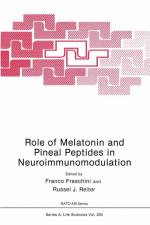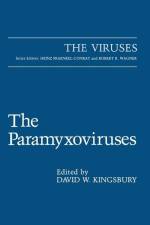Bøger i Software Science and Engineeri serien
-
912,95 kr. - Bog
- 912,95 kr.
-
912,95 kr. Morphology.- The Pineal Gland of Mammals: Some Open Morphological Questions.- Demonstration of Nerve Fibers Immunoreactive to met-Enkephalin, leu-Enkephalin, and ß-Endorphin in the Bovine Pineal Gland.- Comparative Studies of VIP-, PHI-, and NPY-Immunoreactive Nerve Fibers in the Pineal Gland of the Sheep.- Biochemistry.- Pharmacological Regulation of Receptor-Mediated Indoleamine Metabolism in the Mammalian Pineal Gland.- Regulation of Melatonin Synthesis and Release: Paracrine Relationships in Mammalian Pineal Gland.- New Aspects Concerning the Regulation of Pineal Indoleamine Metabolism: Implications for Neuroimmunology.- The Use of Perifusion Technique in the Research of Pineal Neuroendocrinology. The Role of Different Neurotransmitters in the Regulation of Pineal Melatonin Secretion.- Interferon-? Modulates Indoleamine Metabolism in Rat Pineal Gland in Organ Culture.- Melatonin Receptors.- High-affinity Melatonin Receptors in Mammals: Localization, G-Protein Coupling and Signal Transduction.- Melatonin Receptors in Discrete Areas of Rat and Hamster Brain: Modulation by Melatonin, Testosterone and the Photoperiod.- Melatonin Binding Sites in the Nervous and Immune Systems.- 2-?125I? Iodomelatonin Binding in Normal and Neoplastic Tissues.- Melatonin in the gastrointestinal tract.- Biochemical Characteristics of Melatonin Receptors in Different Organs and Translation of Hormonal Signal in the Nucleus.- Physiology.- Annual Changes in the Daily Pattern of Melatonin Synthesis and Release.- Integration of Environmental Signals by the Pineal Gland and its Significance for Seasonality in Small Mammals.- Opioid Involvement in Melatonin Action.- Effect of Melatonin on NADH-Oxidoreductase Activity and Cyclic Nucleotide Levels in Rat Adrenals.- Temporal Profile of Superoxide Dismutase Activity in the Pineal Gland and the Liver of Rats.- Pineal-Harderian Gland Interactions: Morphological and Physiological Evidences for an Endocrine Function of the Syrian Hamster Harderian Gland.- Melatonin Enhances GABA-Mediated Effects when Administered by Micropressure Ejection in Single Unit Neuronal Recordings.- Immunology.- Action of Melatonin on Immune System.- Opioids in Immune Cells.- Spleen Morphology and Lymphoproliferative Activity in Short Photoperiod Exposed Hamsters.- Melatonin Reconstitutes the Decreased CFU-S Content in the Bone Marrow of Hypothalamus - Lesioned Mice.- Oncology.- Melatonin Action on Oncogenesis.- The Effects of Melatonin and Melatonin Analogues on the P388, DLD-1 and MCF-7 Tumor Cell Lines.- Is there a Role for the Pineal Gland in Neoplastic Growth?.- Clinical Studies.- Melatonin, Immunity and Cancer in Humans.- Evidence for a Sex-Specific Facilitatory Effect of Melatonin on Prolactin Secretion. Is Pineal-Prolactin Interaction Relevant to the Clinical Course of Breast Cancer?.- Pineal-Interleukin 2 Interactions and their Possible Importance in the Pathogenesis of Immune Dysfunctions in Cancer.- Significance of Melatonin to Chronobiology: Immunological Correlations.- Circadian Profile of Serum Melatonin in Cushing's Syndrome and Acromegaly.- Urinary 6-Sulfatoxymelatonin Excretion in Breast Cancer Patients and Control Subjects.- Interindividuel Differences in the Responses of Serum and Salivary Melatonin to Light.- Contributors.
- Bog
- 912,95 kr.
-
912,95 kr. 1 The Genetics of Paramyxoviruses.- I. Introduction: The Genome Strategy of the Paramyxoviruses.- II. Genome Organization.- A. Genome Structure and function.- B. Coding Potential.- III. Genetic Interactions.- A. Absence of Genetic Recombination.- B. Complementation Analysis with Conditional Lethal Mutants.- C. Other Mutants.- IV. Analysis of Gene function.- A. Transport and Glycosylation of the G Glycoprotein of Respiratory Syncytial Virus.- B. Membrane Interactions of the F1 Polypeptide of SV5.- C. Gene-Specific Hypermutation in Measles Virus.- V Prospects.- VI. References.- 2 The Molecular Biology of the Paramyxovirus Genus.- I. Introduction.- A. History.- B. General Properties.- II. Virus Structure.- A. Morphology.- B. Virion Envelope and Envelope-Associated Proteins.- C. Internal Virion and Nonstructural Proteins.- III. Viral Replication.- A. Adsorption, Penetration, and Uncoating.- B. Molecular Organization of the Genome.- C. Transcription.- D. Genome Replication.- IV References.- 3 The Molecular Biology of the Morbilliviruses.- I. Introduction.- II. Genome Structure and Replication Strategy.- III. Genetic Relationships among the Morbilliviruses.- A. Nucleocapsid Protein Gene.- B. The Phosphoprotein Gene.- C. Matrix Protein Gene.- D. Fusion Protein Gene.- E. The Hemagglutinin Protein Gene.- F. The L Protein Gene.- IV. Function of the 5? and 3? Untranslated Regions.- V. Diagnosis Using Molecular Techniques.- VI. Morbillivirus Vaccines.- VII. Conclusions.- VIII. References.- 4 The Molecular Biology of Human Respiratory Syncytial Virus (RSV) of the Genus Pneumovirus.- I. Introduction.- II. Structures of the RSV Virion, RNAs, and Proteins.- A. Virion Structure.- B. Overview: Identification of Genomic RNA (vRNA), mRNAs, and Proteins.- C. Genetic Map of Strain A2.- D. Structures of the mRNAs.- E. Sequence Diversity among RSV Strains: Antigenic Subgroups.- F. Structures of the RSV Proteins.- III. RSV Replication.- A. Attachment, Penetration, and Growth Cycle.- B. vRNA Transcription.- C. vRNA Replication.- D. Virion Morphogenesis.- IV. Evolutionary Relationships.- A. RSV Antigenic Subgroups.- B. Relationships with Other Paramyxoviruses.- V. Conclusions.- VI. References.- 5 Evolutionary Relationships of Paramyxovirus Nucleocapsid-Associated Proteins.- I. Introduction.- A. Paramyxovirus Nucleocapsid Structure.- B. Functions of Nucleocapsid-Associated Proteins.- II. Sequence Analyses of Nucleocapsid Proteins.- A. NP Proteins.- B. L Proteins.- C. P Proteins.- III. Conclusions.- IV. References.- 6 The Nonstructural Proteins of Paramyxoviruses.- I. Introduction.- II. Paramyxovirus C Proteins.- A. Identification in Infected Cells.- B. The P and C Proteins are Encoded in Overlapping Reading Frames.- C. Multiple Initiation Codons on One mRNA.- D. Initiation Codon Consensus Sequences and the Scanning Hypothesis.- E. Subcellular Localization and Possible Function of Sendai Virus C Proteins.- F. When is a Nonstructural Protein a Structural Protein?.- G. Identification of C Proteins of Parinfluenza Virus 3, Measles Virus, and CDV.- III. Paramyxovirus Cysteine-Rich Proteins.- A. Identification of the Polypeptide and Its Gene in SV5.- B. Assignment of Coding Regions.- C. Strategy by Which P and V are Encoded.- D. Mechanism for the Addition of Extra Nucleotides to mRNAs.- E. Conservation of the Cysteine-Rich Region of Protein V in Paramyxoviruses.- F. Prediction of Cysteine-Rich Polypeptides and mRNAs with Extra Nucleotides in All Paramyxoviruses.- G. Identification of the Nonstructural Protein V and Its mRNAs in Other Paramyxoviruses.- H. Function of the Paramyxovirus Cysteine-Rich Protein V?.- IV. Paramyxovirus Small Hydrophobic (SH) Proteins.- A. Identification of the Polypeptide and Its Gene in SV5.- B. The SH Gene of Mumps Virus.- V Sendai Virus Nonstructural Polypeptide B: Intracellularly Phosphorylated Matrix Protein.- VI. Prospects.- VII. References.- 7 Paramyxovirus RNA Synthesis and P Gene Expression.- I. Paramyxovirus RNA Synthesis...
- Bog
- 912,95 kr.



